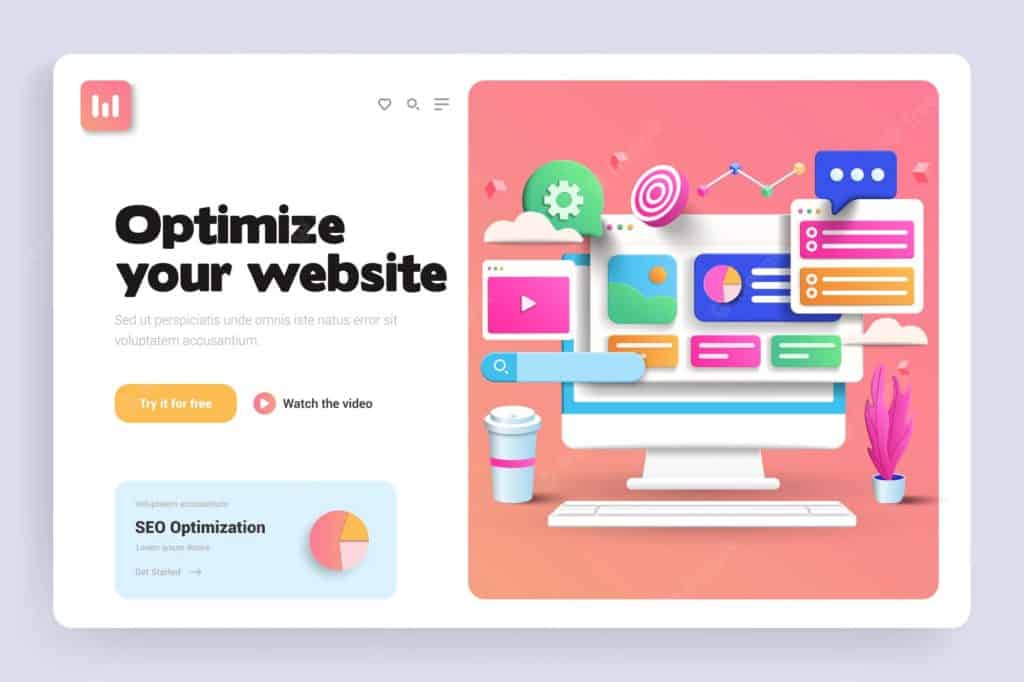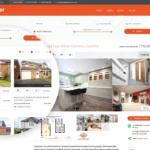
Analytics is the science of extracting useful insights from data. When it comes to website analytics, there are a variety of insights that can be used to identify areas for improvement and monitor performance.
Websites are often a company’s first point of contact with potential customers. A good website can boost your SEO, help you target customers more effectively, and increase conversion rates – but only if it’s optimised and effective. In order to do this, you need to closely monitor your analytics and track the progress of your website. This can be done using a wide variety of tools, such as Google Analytics, Hubspot, or whichever analytics tool you use for your website.
Google Analytics is one of the most popular tools used to track website performance, enabling you to see how many people are visiting your website, when they’re visiting, what country they’re from, how long they’re staying on your website for, and where they’re coming from. It can even show you heat maps of the user’s mouse on each page! Google actually have a new generation of analytics out now – Google Analytics 4 – which will benefit your business if used correctly. More on that specifically in another blog post.
In the meantime, this blog post will explore why using analytics to optimise your website is a great way to generate more leads and maximise your efficiency in pulling in your target audience. Utilising analytics has the following benefits:
SEO benefits
First and foremost, optimising your website will boost your SEO. This is because the more useful your website is, the more people will link to it, which will improve your ranking in the search results. Keyword research is a crucial part of website optimisation, as it allows you to choose the best keywords for your site that will help you maximise the number of visitors you get from the search engines. Website analytics can be used to determine which keywords your target audience is using to find your website, so you can choose the right keywords for your content, streamlining the overall SEO process.
Another SEO-boosting tactic is to create high-quality content that will encourage visitors to share it and link to it. This improves your organic traffic and links to your website, which will help you climb the ranks in the search engine results. Website analytics can be used to analyse what content on your website is resonating most with your visitors and what key phrases they are using when linking to it. This can then be used to create more of the same content, encouraging repeat visitors and boosting your SEO further.
Website analytics also allow you to track your website’s page loading speed, which is important. A slow-loading website will impact your SEO, as Google ranks faster websites higher in search results and user experience.
Customer behaviour insights
By understanding how customers are using your website, you can pinpoint areas for improvement and make your website more user-friendly. This helps you to find out what your customers are looking for on your website, what they are clicking on, and how long they are spending on each page. With this information, you can create a more engaging and enjoyable experience for your customers, encouraging them to spend more time on your website and turn into repeat customers.
To get an idea of how customers are using your website, you can use a tool such as Google Analytics to track conversion rates, bounce rates and scroll-through rates. Conversion rates are the percentage of visitors who take a desired action (such as buying a product, signing up for a newsletter, etc.). Bounce rates are the percentage of visitors to a particular page who navigate away from the site after viewing only one page. Scroll-through rates refer to how far down the page your visitors are scrolling. These stats can help you determine if your content is too long or short, if your images are interesting enough, if the copy is clear enough, etc.
Targeting and personalisation
Another benefit of using website analytics to optimise your website is the ability to target your customers more effectively. You can use data from your analytics to better understand where your audience is coming from, what device they are using, and what times of day they are most likely to visit your website. With this information, you can focus on improving your website for your most engaged visitors and delivering a more personalised experience. You can also use data to identify your most valuable visitors and give them a more tailored experience, helping you to increase their engagement. Website analytics can also be used to identify your most popular content, which can then be highlighted on your website to increase engagement further. This can be done through an internal content recommendation system, an external platform, or even manually. The more tailored your website is to your visitors, the better their experience will be and the more likely they will be to return.
Conversion rate optimisation
A website’s conversion rate is the percentage of people who take the desired action after visiting your site. A high conversion rate is important to boost your business, as it indicates that your website is converting visitors into customers at a high rate. However, conversion rates are often lower than you’d expect, which is why website analytics can be used to help improve your conversion rate. In order to increase your conversion rate, you need to improve the entire customer experience on your website, from the design to the content and function of your pages.
Website analytics can help you to identify any issues your visitors are having with your website and where improvements need to be made to increase engagement. Analysing your bounce rate, time on page, and pages per session can provide you with insight on what is causing people to leave your website quickly. This can be fixed by making sure the most important information is at the top of your website, on the homepage, and that your other pages are easily navigable and quick to read.
There are many different types of goals you can set up on Google Analytics, such as signing up for a newsletter, purchasing a product, watching a video, etc. You can set up a threshold for each goal, such as a minimum number of newsletter signups per day, or a minimum amount spent per day. Once the threshold is met, Google Analytics will fire an email alert, so that you can follow up with the customer and hopefully close the sale.
Website Analytics Reports track progression
Website Analytics Reports wrap up all the important information into a handy report, easy to read and great for comparing current periods to previous periods. This is great way to see the direction your business is going in and if action needs to be taken to turn it around, or if you should keep on doing what you’re doing. Having a direct comparison of now vs then is great for pinpointing the areas of your website that need improvements and areas that are performing well.
Summing up
Websites are often a company’s first point of contact with potential customers, but only a small percentage of these visitors actually make a purchase. This is likely due to the poor design and functionality of the website, so it’s up to you to optimise your website and make it as engaging and easy-to-navigate as possible. For most businesses, their website is the most important marketing tool, and it’s important to make it as effective as possible. This information can be used to create more of the same content, which will help you to increase your engagement and boost your conversion rates.
Book a No-Obligation 30 minutes call with our digital marketing experts
Our 30 minute “getting-to-know-you” phone call is designed to see if your project is something we are able to help with. Be prepared to discuss your business fundamentals, your hopes & expectations of your project and your current business challenges. Schedule a call now.




